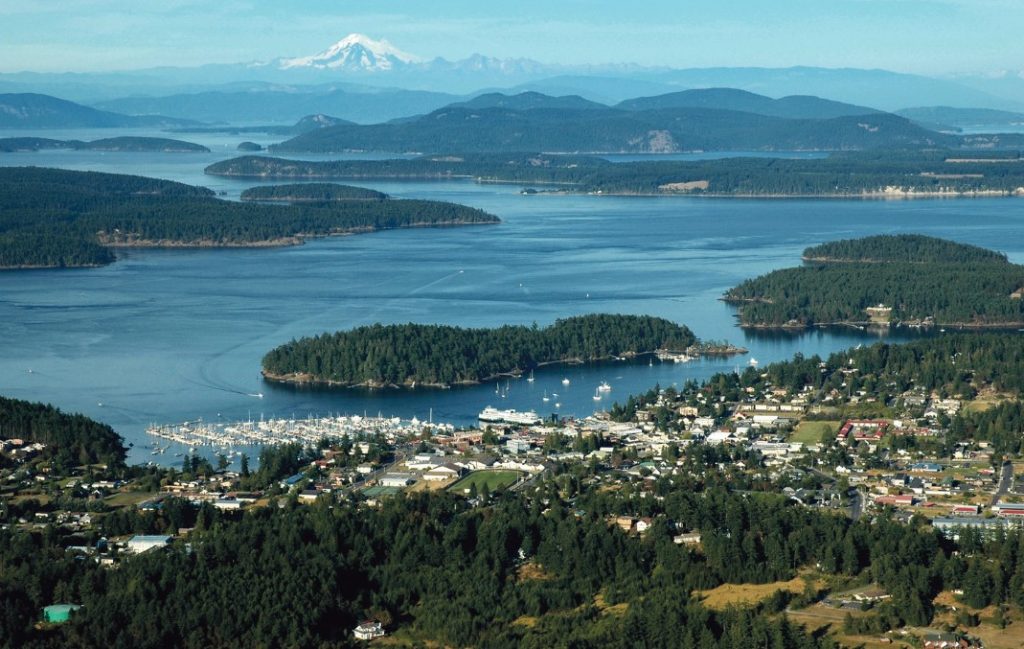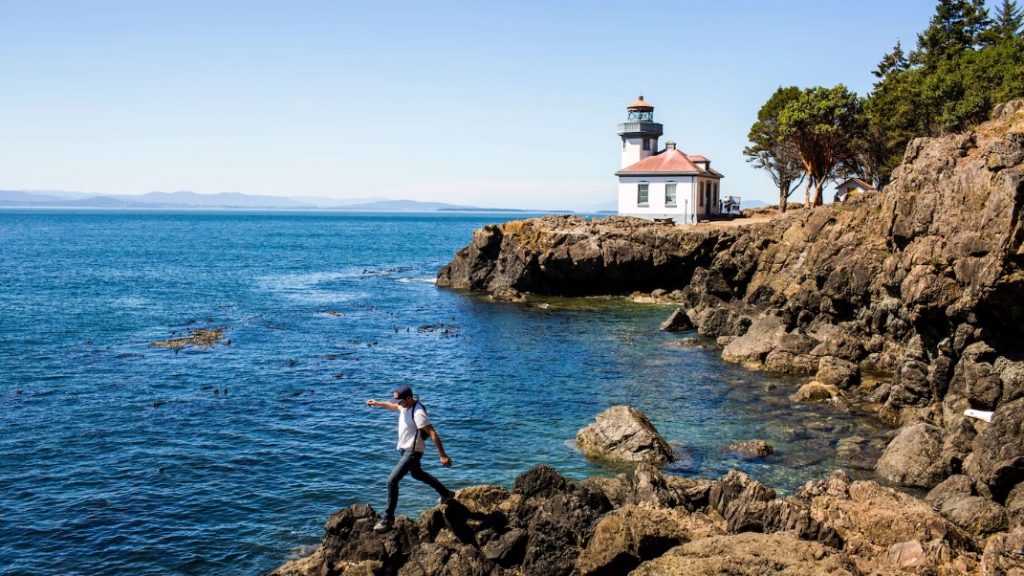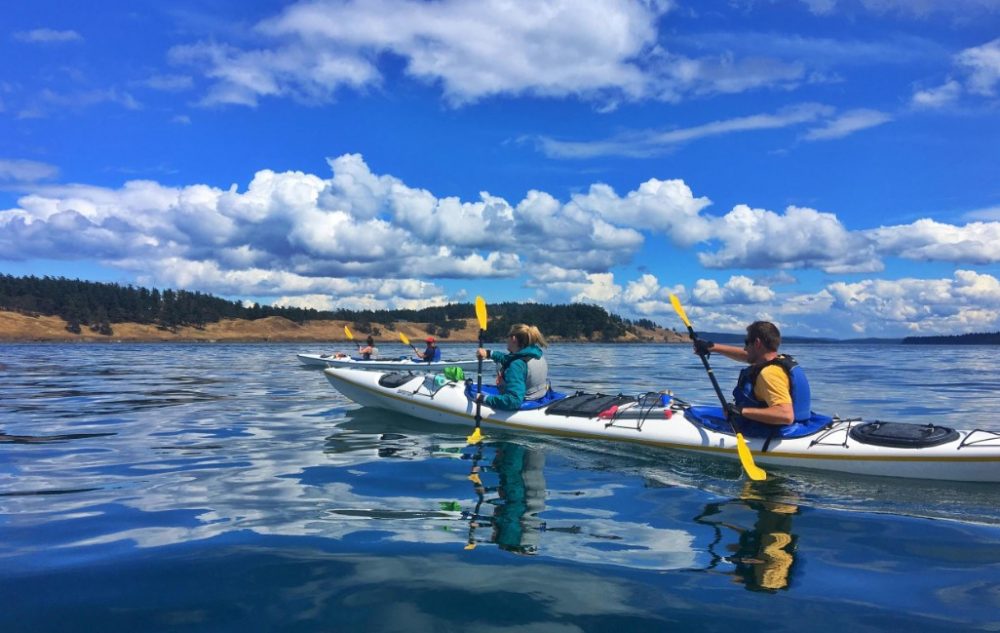No matter your skill level and experience, kayaking in the San Juan Islands is worth considering. These excursions take you through some of the country’s most scenic spots and allow you the rare opportunity to escape into nature, providing a vacation you’ll never forget.
Every adventure in the San Juan Islands is different because the region is incredibly dynamic. There are 172 named islands and reefs throughout the area and countless coves, bays, and harbors to explore, as well.
There’s never a dull moment in this beautiful part of the world. Here are six reasons to go sea kayaking in the San Juan Islands for your next vacation.
1. Wildlife Encounters
One reason visitors go for a sea kayaking adventure in the San Juan Islands is the wildlife. You’re pretty much guaranteed to see some animals during your trip, although the exact species you’ll encounter may vary.
First, dozens of bird species live in the region, including the bald eagle. In fact, the San Juan Islands have one of the greatest concentrations of breeding bald eagles anywhere in the continental United States, with over 125 nesting pairs. Other bird types you might encounter include rock sandpipers, black-bellied plovers, black and ruddy turnstones, black oystercatchers, harlequin ducks, peregrine falcons, brown pelicans, and great blue herons.
In addition to birds, mammals like harbor seals, Stellar sea lions, river otters, Eurasian red foxes, gray wolves, and raccoons make their home in the area. Seals and sea lions are particularly abundant, and you’ll likely see them during your travels.
Of course, few animal encounter experiences can rival witnessing a whale in its natural environment. The San Juan Islands are a year-round orca whale habitat with three pods and 75 whales residing in the region. While seeing these whales on your trek isn’t guaranteed, it’s far more likely than in other parts of the country.
Even if you don’t see an orca whale on your kayaking excursion, humpbacks, gray whales, and minkes also live in these waters. If you have the opportunity to see any of them from your kayak, it’s sure to become the highlight of your vacation.
2. Mountain Views

Source: watersidenw.com
As you paddle through the San Juan Islands, one of the first things you’ll notice is the mountains. From the northern part of the archipelago, you can see the Cascade Mountain Range in the distance, while you can see the Olympic Mountains if you’re paddling in the south. There’s also the opportunity to see Mount Rainier on a clear day, even though it’s over 120 miles away.
That’s not all, though, as the San Juan Islands have mountains of their own. Mount Constitution is the highest peak, with a summit of 2409 feet. Lookout Mountain, Mount Woolard, Entrance Mountain, and Mount Pickett are also visible from the water. One thing for sure is that you’ll never run out of beautiful scenery as you kayak in the water around the San Juan Islands.
3. Bioluminescence Tours
Bioluminescence is a natural phenomenon that creates a stunning display of blue or greenish-blue light in the water. It results from light emission from living organisms called Noctiluca scintillans, which create a chemical reaction when disturbed and produce this breathtaking show. If you kayak in the Salish Sea off the coast of the San Juan Islands, you’ll get to witness this beautiful spectacle with your own eyes.
The bioluminescence in the San Juan Islands is particularly noticeable during the summer months, typically from June to September. During this time, the waters can be filled with these bioluminescent organisms, creating a magical and mesmerizing spectacle, especially in the dark of the night.
Kayak tours will take you into the water at night to experience the bioluminescence, creating a once-in-a-lifetime opportunity. It’s well worth the trip because the waters of the Pacific Northwest are full of Noctiluca scintillans.
4. Remote Beaches

Source: travelsanjuan.com
The San Juan Islands are spread out and sparsely populated, so there’s a lot of wildernesses to enjoy. The region is also full of remote, secluded beaches, giving you the rare chance to relax on a private stretch of sand during your kayak adventure.
Places like Fourth of July Beach, Open Bay, and Eagle Cove provide a relaxing beach experience on San Juan Island, while Hunter Bay, Flint Beach, and Jones Bay are similar on Lopez Island. Of course, your tour guide might have some even more secretive locations to bring you, taking your kayaking adventure to an entirely new level.
5. Protected Waters
One issue you could encounter when sea kayaking is rough water. Wind, waves, and currents can all cause problems for paddlers, putting them in danger.
While you’re still in the ocean and, therefore, should proceed cautiously when kayaking around the San Juan Islands, many of the coves and bays here are protected from large waves and wind, creating a far safer kayaking experience. As long as you’re with an experienced guide, you can avoid areas with strong currents, helping keep you safe on your journey.
6. Great Weather

Source: lonelyplanet.com
As you know, the Pacific Northwest is known for its rain. Places like Seattle and Tacoma are pretty damp, but that climate doesn’t extend to the San Juan Islands.
This region averages 247 days of sunshine per year and has about half the rainfall of Seattle. This climate results from the archipelago sitting in the Olympic Mountain Range’s rain shadow, an effect that creates dry weather and minimal winds.
If you visit the San Juan Islands in the summer, you’ll rarely encounter rain and will enjoy temperatures in the high 70s, making it the ideal weather to go for a paddle. This environment couldn’t be better for kayaking, which is one reason why it’s such a popular activity here.
Book Your Kayak Tour Today
Sea Quest Kayak Tours offers one-day, two-day, three-day, and five-day tours around the San Juan Islands. We also feature sunrise, sunset, bioluminescence, and moonlight tours, depending on what you wish to experience.
The San Juan Islands have some of the world’s most incredible kayaking, making it a trip you’ll never forget. Book your excursion today and start planning your vacation to one of the most scenic spots on the West Coast.

















